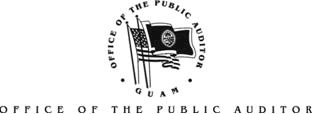
FY 2004 Financial Highlights
July 26, 2005
For the second year, the Guam Housing Corporation (GHC) has realized an increase in net assets. Income from operations has more than doubled from $233,957 to $488,767 and by fiscal year’s end total assets were $30.8 million. This is an increase of 1.6% from $30.3 million reported in 03’.
These increases are encouraging considering that three years ago the Corporation was almost on the verge of bankruptcy, for its liabilities well exceeded its assets by $5.7 million. Today, the Corporation’s current assets stand at $17.3 million while current liabilities remain at $12.2 million.
Reductions in operating expenses of $437,000 serve as the main reason for the increase in operating income. The Corporation’s largest expense, interest expenses, was reduced by 15% falling from $1.09 million in 2003 to $922,971 in 2004. Other expenses, including bad debts and professional services, fell significantly, decreasing by 10% and 60% respectively from 2003.
GHC’s loan delinquencies continue to decrease, falling by $4.8 million, from $9.9 million in 03’ to $5.1 million in 04’. The decrease has placed the Corporation in a better position, but delinquencies still represent 18% of total loans.
Markedly, although the Corporation remains in a better position, FY 2004 figures show a decline in revenues. The Corporations largest source of revenue, received from interest on mortgage loans, declined from $2.5 million in 03’ to $2.3 million in 04’ recoiling by 8% after a short-lived revenue increase in 03’. According to GHC, the decrease in interest income between FY 03’ and 04’ is due to payoffs and foreclosures. In FY 04’ payoffs totaled $1.5 million while foreclosures totaled $1.6 million.
Payoffs and foreclosures compounded with the non-issuance of mortgage loans draws concern towards the ability of GHC to issue new loans. In FY 2004, GHC issued only two loans totaling $141,083 combined, and just one loan for only $11,237 in 2003.
As a government run lending institution, which currently has over $3.2 million available for lending, the lack of loan originations calls into question GHC’s ability to sustain its mission as a lender of “last resort.” GHC’s interest rates for 30-year mortgage loans remain at 6% and 7.5% while some private lenders currently advertise at 5.86%, for a similar term. More importantly policy makers should assess whether the government should still be in the lending business.
GHC continues to report an outstanding liability of $10.5 million associated with the design and build of off-site infrastructure for the Lada Estates project. The Corporation is challenging both the liability and the accrued interest, but as of Sept. 30, 2004, the matter remains unresolved.
Since FY 2002, the Corporation has recorded a receivable of $2,915,000 due from the Government of Guam, which the Department of Administration (DOA) has challenged and has not recorded on its books.
Effective November 2003, GHC merged with the Guam Rental Corporation (GRC). GRC is principally engaged in the ownership and rental of housing complexes known as Lada Gardens and Guma As-Atdas.
Prior to the merger, the financial position of GRC was unknown, for audits of GRC had not been conducted since FY 2001. According to GHC and GRC Administrators, the transactions were not recorded due to the drastic downsizing experienced in FY 2002 compounded with the passing of Super Typhoon Pongsona in late December of the same year. As a result, records were not posted and financial information became backlogged. For FY 04’ GRC reported an increase in net assets of $140,812 and total assets of $7.2 million. Audited information for FY 02’ and 03’ are not available.
The auditors report on compliance and internal controls revealed 20 findings of which 9 were noted as material weaknesses. Of the nine findings considered to be material six were directly linked to GRC, while the remaining three dealt with GHC. However, of the 20 findings combined an even ten were cited between both entities, while four were prior year findings for GHC. The material findings discussed in the report include:
Finding 04-02 cites that loans in arrears three months or more approximate 21% of the total Corporation’s loan portfolio. These loans include those referred to the attorney for collection and total $5.3 million and $7.4 million for 04’ and 03.’ As a result, the Corporation has lost additional interest income.
Finding 04-05 noted that required documents were missing from the files of two assumed mortgage loans. In each file, there was no completed loan application, updated title report, or current appraisal. Further, the auditor’s questioned a loan guarantee made by the Chamorro Land Trust Commission (CLTC), for CLTC financial statements and audit reports have not been made available leaving no assurance that CLTC will be able to repay the note in event of foreclosure.
Finding 04-13 cited that not all tenants, occupying GRC rental units were properly certified, as mandated by the Corporation’s Multifamily Housing Programs Handbook. Certification ensures that all tenants are eligible occupants who may pay rent commensurate with their income. Accordingly, the Corporation may have allowed ineligible persons to be participating in the program.
In a related finding, 04-17 cited that no documentation was present to verify the income for three rental tenants. Verification of employment, such as check stubs, income tax returns, or public assistance documents were not on file.
Finding 04-20 cited that the TRA (the only administrative staff situated at the rental office) both collects and posts tenant receivables, allowing for the potential of fraud and misstatement of rental payments.
See the Management’s Discussion and Analysis (MD&A) for further detail.